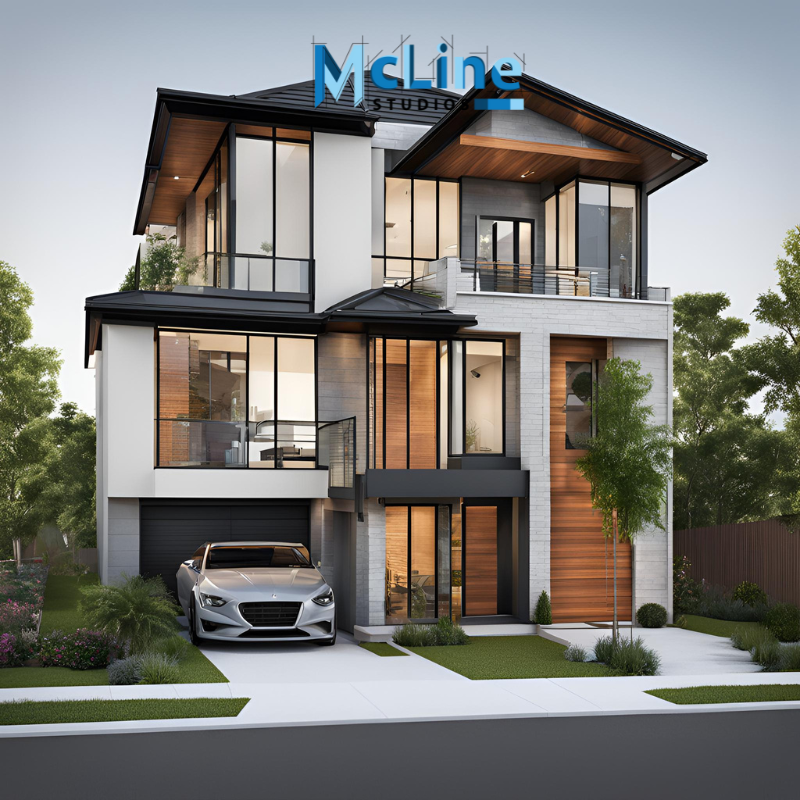Incorporating Smart Home Technology into Residential Drafting Plans

In today’s rapidly evolving technological landscape, smart home technology has transcended from a luxury to a necessity, fundamentally reshaping how we live. As homeowners increasingly seek convenience, efficiency, and enhanced security, integrating smart technology into residential spaces is becoming essential for modern drafting plans.
This paradigm shift not only influences the design and functionality of homes but also poses unique challenges and opportunities for architects and designers. By incorporating smart home technology into residential drafting plans, professionals can create spaces that are aesthetically pleasing and equipped with advanced systems that promote sustainability, energy efficiency, and user-centric living.
This introduction explores the importance of integrating smart home technology into residential design, highlighting its benefits and the critical considerations that must be addressed during the drafting process.
As we delve deeper into this topic, we will examine practical strategies for seamlessly blending traditional architectural practices with cutting-edge technological innovations, ultimately leading to homes that are smarter, more adaptable, and ready for the future.
Understanding Smart Home Technology
Smart home technology is changing the way we live, making our homes more comfortable and convenient. At its core, smart home technology uses devices that can connect to the internet and communicate with each other. These devices can be controlled remotely using a smartphone or tablet, allowing us to manage many aspects of our home from anywhere.
One popular example is smart lighting. With smart bulbs, you can adjust the brightness or change colors using an app. This not only adds ambiance to your rooms but also helps save energy. Smart thermostats are another great feature. They learn your schedule and adjust the temperature automatically, keeping your home cozy while reducing energy costs.
Security is also enhanced with smart home technology. You can install smart cameras and doorbells that let you see who is at your door in real-time, even when you’re not home. Smart locks allow you to lock and unlock your doors remotely, providing peace of mind.
Moreover, voice-activated assistants, like Amazon Alexa or Google Assistant, make it easy to control your smart devices just by speaking. They can answer questions, set reminders, and even play music.
Benefits of Integrating Smart Home Technology in Drafting Plans
Integrating smart home technology into drafting plans offers numerous benefits that enhance both the design process and the outcome. First, it allows architects and designers to create homes that are not only beautiful but also functional and energy-efficient. Smart home systems can control lighting, heating, security, and appliances, making homes more convenient for residents.
One significant advantage of incorporating smart technology into drafting plans is improved energy management. By using smart thermostats and lighting, homeowners can reduce energy consumption, leading to lower utility bills and a smaller carbon footprint. These technologies can be programmed to adapt to the occupants’ schedules, ensuring that energy is used only when needed.
Moreover, integrating smart home features increases the appeal of a property. As more buyers look for homes equipped with modern technology, architects who include these elements in their designs can attract a broader audience. This forward-thinking approach not only meets market demands but also positions the designer as a leader in innovation.
Also, drafting plans that include smart technology can streamline construction processes. By providing clear guidelines for wiring and installation, builders can avoid potential delays and ensure that systems are set up correctly from the start.
Incorporating Smart Technology in Drafting Plans
Smart technology is changing the way we create drafting plans. With the rise of digital tools, architects and designers can now work more efficiently and effectively. These technologies help in creating more accurate and detailed plans, leading to better construction outcomes.
One of the key benefits of smart technology is the use of Building Information Modeling (BIM). BIM allows designers to create 3D models that include detailed information about materials, dimensions, and even energy usage. This means that everyone involved in the project can see the same information, reducing misunderstandings and errors.
Another useful tool is cloud-based software. This allows teams to work together in real-time, no matter where they are. Changes made by one person can be instantly seen by everyone, making collaboration easier and faster. This is especially important for large projects where many people are involved.
Smart technology also enhances visualization. Virtual reality (VR) and augmented reality (AR) allow clients to walk through a space before it is built. This helps them understand the design better and make necessary changes early in the process.
In summary, incorporating smart technology into drafting plans is transforming the architecture and construction industries. By using tools like BIM, cloud software, and VR, professionals can create better designs, improve collaboration, and ensure a smoother construction process. Embracing these technologies is key to staying competitive in today’s fast-paced world.
Future Trends in Smart Home Technology
As we move further into the digital age, smart home technology is becoming a bigger part of our daily lives. One major trend is the rise of voice-activated devices. With smart speakers and assistants like Amazon Alexa and Google Assistant, controlling home systems has never been easier. People can adjust lights, play music, or check the weather simply by speaking.
Another exciting development is the growth of smart appliances. From refrigerators that track food inventory to washing machines that can be controlled via smartphone apps, these devices are making home management more efficient. Imagine a coffee maker that brews your favorite drink just as you wake up!
Home security is also evolving with smart technology. Advanced security cameras and smart doorbells can alert homeowners to unusual activity in real-time, even when they are away. Many systems now offer facial recognition, adding an extra layer of safety.
Energy efficiency is another important focus. Smart thermostats can learn your habits and adjust temperatures to save energy and lower bills. Solar panels combined with smart technology allow homeowners to monitor their energy use and produce their own clean energy.
Finally, home automation is set to become more integrated. Systems that can work together seamlessly, controlled through a single app, will provide more convenience and control. As technology continues to advance, smart homes will become even smarter, making our lives easier and more comfortable.
The End Note
Incorporating smart home technology into residential drafting plans represents a pivotal advancement in modern architecture and design. As homeowners prioritize convenience, security, and energy efficiency, architects and designers must adapt to these evolving demands. The integration of smart systems not only enhances the functionality and aesthetic appeal of homes but also addresses critical issues related to sustainability and user-centric living.
By leveraging innovative tools like Building Information Modeling (BIM), cloud-based collaboration software, and visualization technologies such as virtual and augmented reality, professionals can create detailed and accurate plans that streamline construction processes. These advancements lead to better communication among project teams and minimize potential errors, ensuring a smoother path from design to execution.
Looking ahead, the future of smart home technology is bright, with trends such as voice activation, smart appliances, enhanced security systems, and energy efficiency measures set to reshape residential environments further. As these technologies continue to evolve, they will offer even greater convenience and functionality, making homes not just smarter but also more responsive to the needs of their inhabitants.
In conclusion, the seamless integration of smart home technology into residential drafting plans is essential for creating homes that are not only adaptable to current lifestyles but also prepared for the future. Architects and designers who embrace this paradigm shift will not only meet the demands of today’s homeowners but also position themselves as leaders in a rapidly changing industry.






